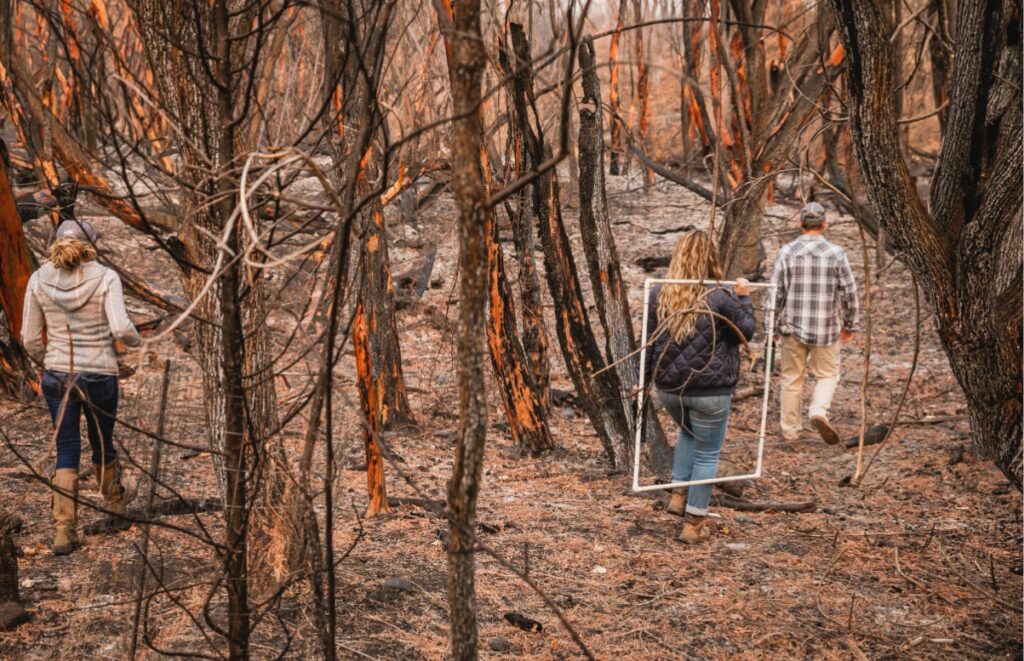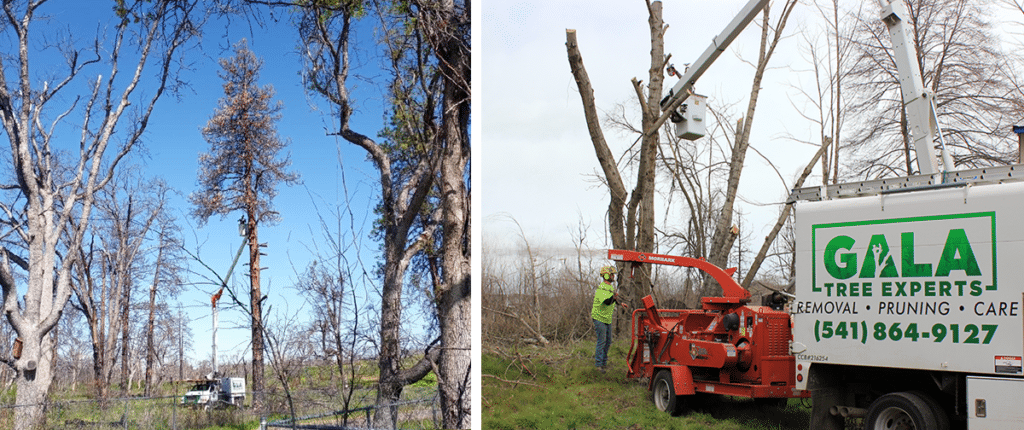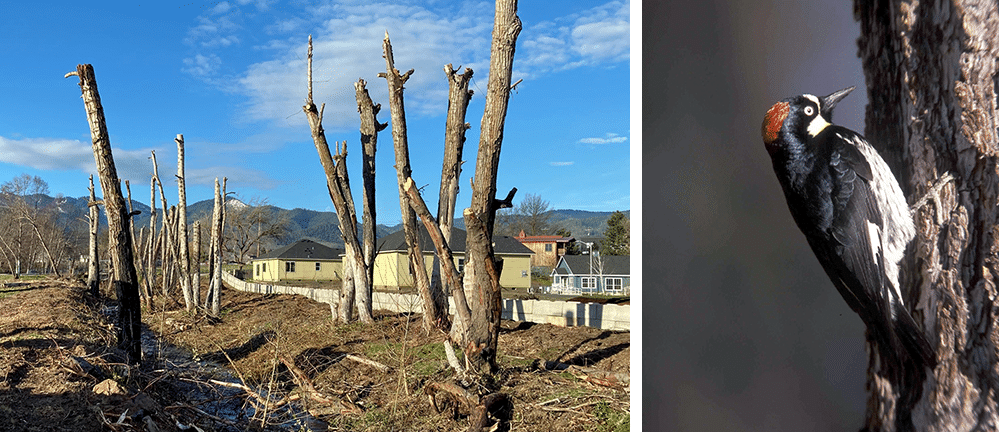Fixing a Forest after Fire: Protecting Habitat and Homes
July 7, 2023
Eugene Wier stands on the south bank of Bear Creek near the city of Talent, Oregon. His attention is focused north, across the creek, on signs of rebirth and regrowth amid a damaged landscape. An acorn woodpecker is resting on a burned tree trunk. Green shoots of black cottonwood and Oregon ash are pushing up through charred earth cleared of invasive blackberry bushes.
With a grant from the Oregon Watershed Enhancement Board, The Freshwater Trust (TFT) is completing a 47-acre restoration project along Bear Creek between Ashland and Phoenix. The land was severely burned in the 2020 Almeda Fire.
The goal of the restoration project is two-fold: remove burned debris to increase community safety and landscape manageability and replant native vegetation to increase diversity and resilience for long-term land and water habitat benefits.

Staff assess impacts of the Almeda Fire along Bear Creek
Hundreds of burned trees left behind after the fire posed a threat to community safety. Instead of removing them in whole, TFT piloted a new method to remove the most dangerous parts of the trees’ upper stories while leaving in place the standing burned trunks. The woody materials left behind, called snags, have a natural, ecological function.
“By creating ‘safe snags,’ we reduced the risk of injury or damage to property while retaining the parts of the tree that provide long-term floodplain and wildlife benefits,” said Eugene Wier, a Restoration Program Manager at The Freshwater Trust.

These snags will be made safe by removing the crowns, but getting them there is dangerous work
In April and May 2023, TFT and restoration partners removed the hazardous dead tree crowns while retaining the main trunks, larger logs and root masses that provide significant benefit to cavity-nesting birds such as acorn woodpeckers, Northern flickers, and wood ducks as well as bats.
“This approach strikes a balance between wildlife habitat and community safety and manageability,” said Wier.

With the area stabilized, TFT and partners will next focus on replanting the streambanks with long-lived species such as black oak, cottonwood, big leaf maple, Oregon ash, and Ponderosa pine. These hearty native trees not only help the existing plant community recover but also make the plant community stronger to resist future disturbance.
“There is a huge need to increase the diversity and cover of native species after the wildfire,” said Wier.
In the fall of 2023, TFT will replant approximately 7,000 native trees and shrubs within 20 acres of the 47-acre site to increase density of the streamside forest in key areas identified by a post-fire vegetation assessment.
This restoration along Bear Creek’s north bank will complement restoration along 22 acres on the south bank that TFT has completed over the past three years. The south bank projects focused on growing riparian forests whose shade cast shadows over the water to block sunlight and reduce thermal load. Native fish need these cool-water habitats to survive.
“Twenty acres may not sound like much, but when stretched over a 50-foot-wide stream buffer it can equal miles of restored streambank,” said Wier.
Revegetation projects along the south bank are part of the City of Ashland’s water quality trading (WQT) program, where municipalities use natural infrastructure techniques, such as streamside plantings or the building of wetlands, to offset the water quality impacts of treating and discharging wastewater on native fish. This is done with the goal of staying in compliance with the Clean Water Act.
Ashland’s WQT program also is helping bring immediate restoration to priority locations after the fire, and it has served as a catalyst for additional investment into the region by helping secure funding from additional state and federal sources, including the U.S. EPA, Federal Emergency Management Agency (FEMA), Oregon Watershed Enhancement Board, and Jackson County, Oregon.
“Like a healthy ecosystem made of diverse species in a complex landscape, so too a watershed-wide restoration effort needs a diverse set of funders and integrated objectives working together to realize the desired outcome,” said Wier. “We look at restoration through a wide lens and implement actions designed to build resilience broadly. A big vision and multiple funding sources are knitted together.”
“This isn’t just about fish and wildlife habitat, or water quality, it’s about community protection, equal access to nature and water, recreation opportunities, and building a resilient landscape in which our community can prosper.”
#Ashland #native trees #Oregon #riparian restoration #rogue #Rogue River Basin
